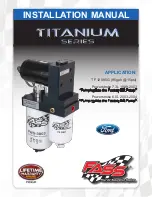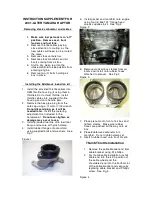
The repair methods given by the manufacturer in this document are based on the technical specifications, current at the time of release. The methods may be modified as a result of changes introduced by the manufacturer in the production of the various component
units and accessories from which the vehicles are manufactured. The reproduction, translation, transmission, in part of or whole of the present document,are prohibited without the prior written consent of Mahindra & Mahindra Ltd. The use of this document by any
person other than the trained personnel, at the Authorized Service Centre of Mahindra & Mahindra Ltd.,will amount to unauthorized use and shall be liable for penalty/prosecution
© 2013 Mahindra & Mahindra Ltd.
MAN-00233
MAY 2013/Rev 1
WIRING MANUAL
25042013
ESSENTIAL ELECTRICAL CONCEPTS
Converting Current Values:
To convert amperes to
milliamps (and vice
versa)
just move the decimal
point three places.
NOTE:
Make sure that current values are expressed in the same units when comparing measured
current values to diagnostic specifications.
Current should match the specifications in the service information.
•
If current is too high, check for a short circuit or a faulty component.
•
If current is too low, check for excessive resistance (with resistance and voltage drop
measurements).
Converting amperage values
−
Automotive system currents vary from large to small:
•
Large currents (up to 100 A)
−
charging and starting system.
•
Small currents (less than an amp)
−
electronic control circuits.
Large current values typically display in amperes. Smaller current values may be expressed
as milliamps. To convert from one to the other, simply move the decimal point three places:
•
Amperes to milliamps
−
decimal point moves 3 places to the right.
Ampere = 1,000 milliamps
•
Milliamps to amperes
−
decimal point moves 3 places to the left.
Ampere = 1.000 milliamp
Inductive current probes
−
These are also called current clamps."
They are:
•
An optional accessory for DMMs.
•
Convenient (no need to open the circuit being tested).
•
Safe.
Current probes work by sensing the magnetic field generated in a wire by the current.
198








































